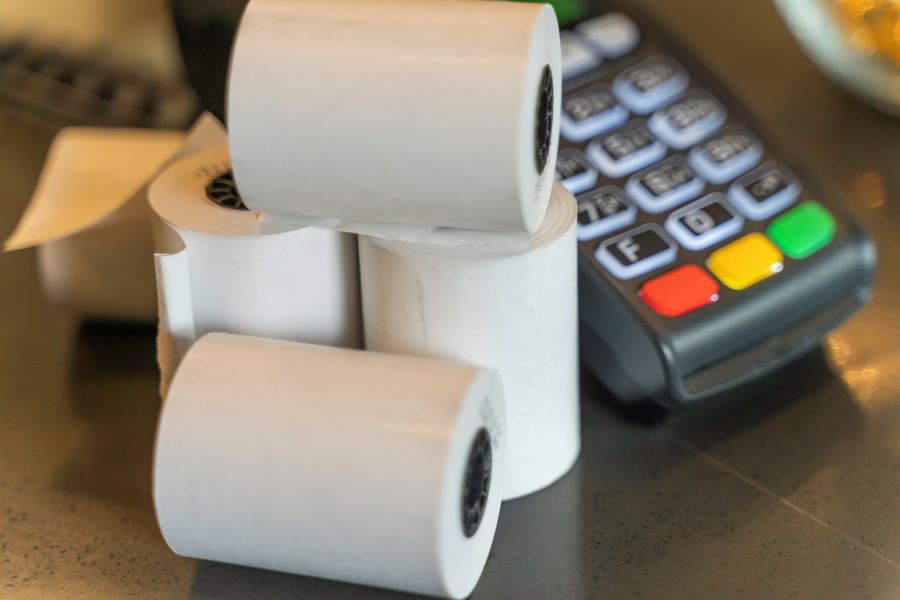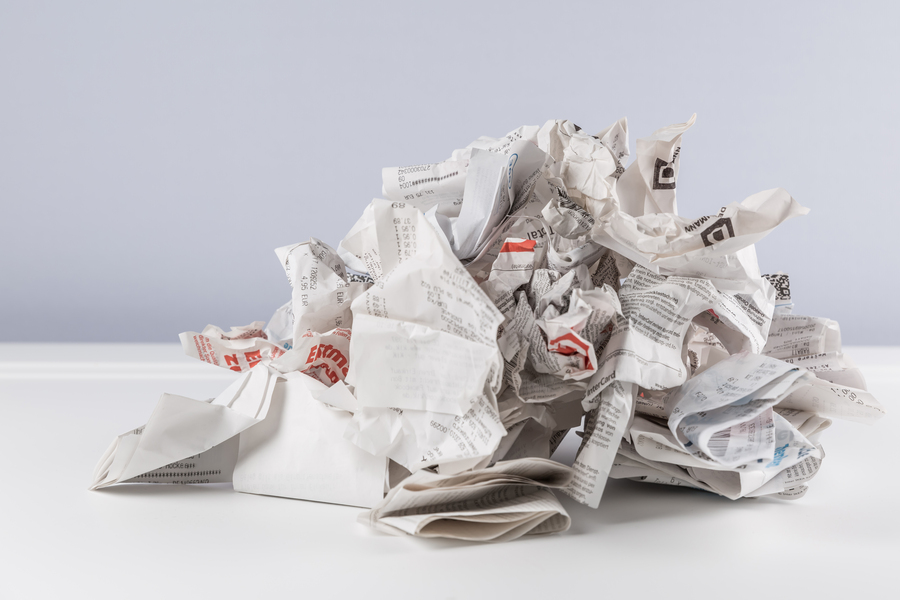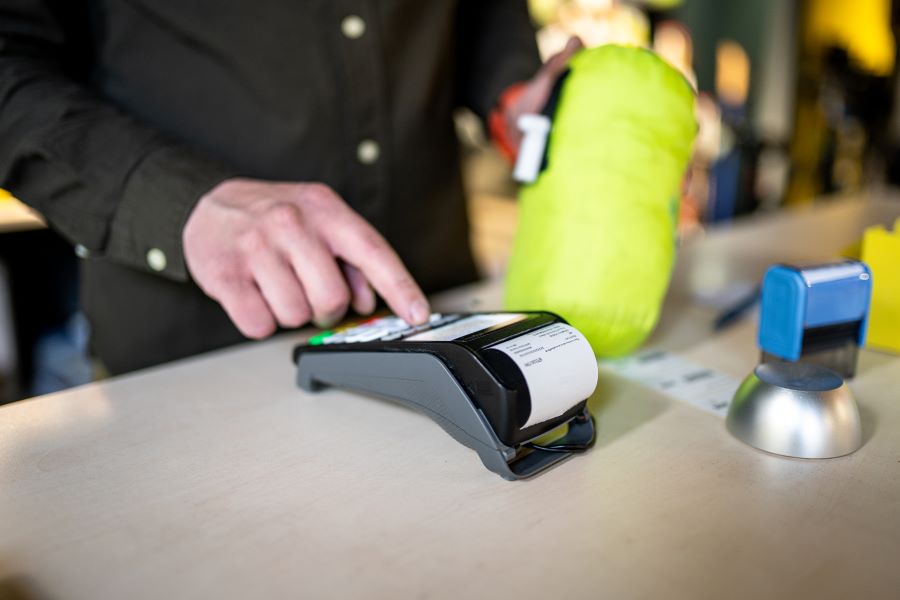While paper receipts have been the traditional mode of recording transactions, they come with often overlooked perils. Managing and storing paper receipts can be challenging, leading to numerous issues that can have serious consequences.
The perils of paper receipts are multifaceted, impacting both individuals and the environment. As we move towards a more digital era, it’s time to consider the alternatives. Digital receipts offer a convenient and environmentally friendly solution, reducing waste during production and providing easy access for business owners and individuals. Making the switch to digital not only helps streamline expense reports and tax purposes but also contributes to a healthier planet.
Consequences for health
In addition to the challenges above, paper receipts also pose potential consequences for our health. One of the primary health risks associated with paper receipts is the presence of the chemical Bisphenol A (BPA) in their coating.
BPA is a known endocrine disruptor, meaning it can interfere with hormone balance in the body. Regular handling of paper receipts can lead to the absorption of BPA through the skin or ingestion through hand-to-mouth contact. This can result in hormone level imbalances, leading to various health issues.
Studies have linked BPA exposure to increased risks of infertility and miscarriage, as it can disrupt reproductive hormone function. Additionally, BPA has been associated with an increased likelihood of developing prostate cancer and type 2 diabetes. In children, exposure to BPA has been linked to behavioral changes and disruptions in neurological development.
Given these health risks, minimizing exposure to BPA and transitioning to digital receipts is crucial. Digital receipt options eliminate the need for handling and storing paper receipts, reducing the risk of BPA exposure. By switching to digital, we can prioritize our health and well-being while benefiting from digital record-keeping’s convenience and efficiency.
Environmental impact
The use of paper receipts has a significant environmental impact. Approximately 25 million trees are cut down each year to produce paper receipts. This deforestation contributes to habitat destruction and loss of biodiversity. Paper receipts consume an astonishing 18 billion liters of water and 22 million barrels of oil annually.
One of the major concerns with paper receipts is the use of thermal paper, which contains Bisphenol A (BPA). BPA is a harmful chemical that can disrupt hormone balance in the body. It is even more problematic because thermal paper cannot be recycled, contributing to solid waste and landfill pollution. When thermal paper receipts are disposed of, the BPA can leach into the environment, contaminating soil and water sources.
Digital receipts have a lower carbon footprint compared to paper receipts. The production and transportation of paper receipts generate greenhouse gas emissions, contributing to climate change. Digital receipts, on the other hand, require minimal resources and energy, making them a more environmentally friendly choice.
It is not as practical as people like to think.
Paper receipts may seem practical for many, but they present several challenges that make them less practical than people think. One major issue is that most paper receipts end up in the bin. This not only contributes to the waste during production but also adds to the environmental impact of solid waste and landfill pollution.

The need for digital copies for accounting becomes more apparent in an increasingly digital world. Digital receipts eliminate the inconvenience of paper receipts by providing an efficient and organized way to track purchases and expenses. They can easily be stored and accessed electronically, resulting in better bookkeeping practices and streamlined expense reports. Furthermore, digital receipts offer the added benefit of being easily searchable and sortable, allowing quicker retrieval of specific transactions.
In conclusion, paper receipts are not as practical as people like to think. They contribute to waste, are easily lost or damaged, and add extra business burdens. The switch to digital receipts reduces the environmental impact and offers a more efficient and convenient solution for bookkeeping and accounting needs in the digital age.
The extra cost for businesses
The move from paper receipts to digital alternatives comes with various benefits. However, it’s important to acknowledge that businesses may face additional costs with this transition. Let’s delve into the extra expenses associated with the switch.
One immediate cost to consider is the need for digital receipt equipment. While many modern payment systems come with inbuilt printers, some businesses may require separate receipt printers. These printers can be an upfront investment, adding to the initial setup cost.
Furthermore, businesses must factor in ongoing expenses such as paper rolls and ink for printing receipts. With traditional paper receipts, these supplies can quickly add up, especially in high-volume establishments. Not to mention the regular maintenance required for printers, further increasing the financial burden.
While additional expenses may be involved in transitioning from paper to digital receipts, these costs should be weighed against the long-term benefits. Improved efficiency, streamlined accounting practices, and reduced environmental impact are just some of the advantages that digital alternatives offer. Ultimately, embracing digital receipts can be a worthwhile investment for businesses.
Are electronic receipts better?
Electronic receipts offer numerous advantages over paper receipts, making them a better option for businesses and consumers. The convenience of electronic receipts cannot be understated. With digital receipts, customers no longer need to worry about keeping track of physical copies and can easily access their purchase information through email or a designated online platform.
Moreover, electronic receipts are growing in popularity among consumers. They appreciate the ease of organizing digital records and the ability to quickly search and filter transactions, especially during tax season or when preparing expense reports. Additionally, digital receipts provide marketing opportunities by allowing businesses to connect with customers through their email lists, offering personalized promotions and upselling opportunities.
Overall, electronic receipts offer convenience, eco-friendliness, and increasing customer satisfaction. Business owners should seriously consider switching to digital receipt options to save costs on paper rolls, ink, and maintenance of receipt printers. By embracing digital alternatives, businesses can reduce waste, minimize their carbon footprint, and meet the demands of a more technologically advanced consumer base.

Options for businesses
Options for businesses to transition from paper receipts to electronic receipts are becoming more abundant and accessible. One approach is to utilize thermal receipt printers that use BPA-free alternatives. These printers provide the convenience of instant printing while reducing the environmental impact associated with traditional thermal papers. For customers who still prefer physical receipts, businesses can offer traditional receipt books made from recycled materials or sustainably sourced paper.
The popularity of digital receipts is steadily increasing among businesses of all sizes. Many retailers have already adopted this system, recognizing the benefits it offers. For example, large retailers like Apple and Target now allow customers to receive digital receipts via email or mobile apps. Small businesses, such as local cafés and boutiques, also embrace electronic receipts and incorporate them into their operations.
Switching to digital receipts allows businesses to streamline processes, reduce costs, and improve customer satisfaction. It eliminates the need for physical storage and organizing receipts, making it easier to access and search for transactions when needed. Additionally, digital receipts provide businesses with opportunities for targeted marketing and personalized promotions, helping build stronger customer relationships.
Overall, the options available for businesses to transition from paper receipts to digital are expanding, making it more feasible and advantageous for businesses to switch. With digital receipts’ growing popularity and benefits, it’s time for businesses to embrace this eco-friendly and efficient solution.


